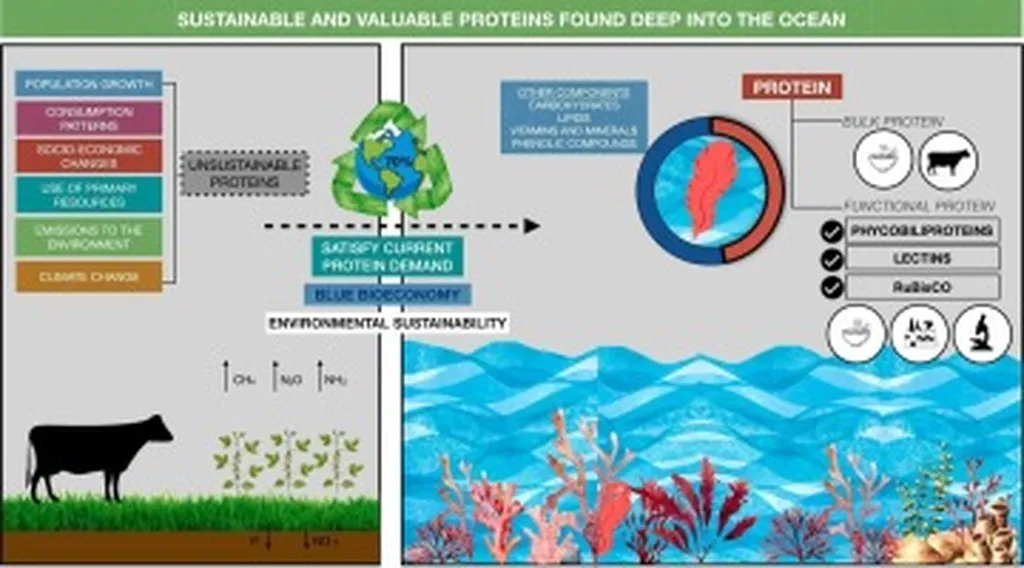In a groundbreaking study published in the journal *Frontiers in Bioengineering and Biotechnology* (formerly *Frontiers in Plant Science*), researchers have unlocked new pathways for the sustainable production of biliverdin and phycoerythrobilin, two crucial compounds in the biosynthesis of phycobiliproteins. These proteins are vital in photosynthesis and have significant commercial applications, particularly in the energy sector. The research, led by Shuang Li from the CAS and Shandong Province Key Laboratory of Experimental Marine Biology at the Institute of Oceanology, Chinese Academy of Sciences in Qingdao, China, explores the genetic resources of Neoporphyra haitanensis, a valuable red seaweed known for its high phycoerythrin content.
Phycobiliproteins are essential co-pigments in photosynthesis, composed of apoproteins and phycobilins. Biliverdin IXα and phycoerythrobilin are key substances in their biosynthesis. The study identified and isolated genes encoding NhHO1, NhPebA, and NhPebB from N. haitanensis, which are integral to its phycoerythrin biosynthetic pathway. Additionally, the researchers compared these genes with ApHO1 from Arthrospira platensis and PebS from Prochlorococcus phage P-SSM2.
The findings revealed that the genes from N. haitanensis did not encode active enzymes, likely due to the absence of crucial motifs. However, the transformation of ApHO1 and PebS into Escherichia coli successfully led to the synthesis of biliverdin and phycoerythrobilin. This is the first report of sequence analysis and enzyme activity verification of phycoerythrin synthesis genes from N. haitanensis, providing a foundation for future genetic resource explorations.
“This is a significant step forward in understanding the genetic mechanisms behind phycobiliprotein biosynthesis,” said Shuang Li, the lead author of the study. “Our findings not only shed light on the genetic resources of N. haitanensis but also pave the way for environmentally friendly production methods of phycobiliproteins.”
The successful production of biliverdin and phycoerythrobilin lays a foundation for sustainable and eco-friendly preparation of phycobiliproteins, which have applications in various industries, including food, cosmetics, and biotechnology. In the energy sector, phycobiliproteins are used in biofuel production and as natural dyes in solar panels, enhancing their efficiency and sustainability.
“This research opens up new avenues for the commercial production of phycobiliproteins,” added Li. “By leveraging genetic engineering and heterologous expression, we can develop more efficient and sustainable methods for producing these valuable compounds.”
The study’s implications extend beyond immediate commercial applications. By understanding the genetic basis of phycobiliprotein biosynthesis, researchers can explore new enzyme resources and optimize production processes. This could lead to advancements in biofuel technology, renewable energy, and other green technologies, contributing to a more sustainable future.
As the world shifts towards renewable energy and sustainable practices, the demand for eco-friendly and efficient production methods is on the rise. This research provides a crucial stepping stone in meeting that demand, offering a glimpse into the future of biotechnology and its potential to revolutionize the energy sector.

